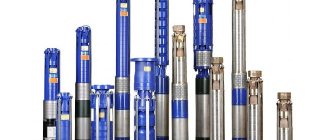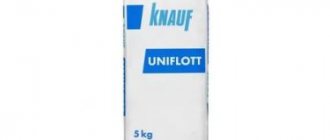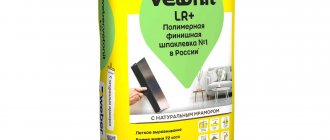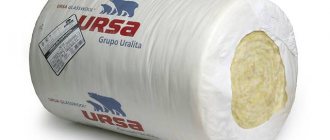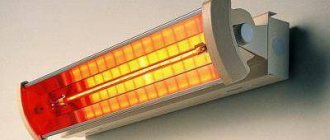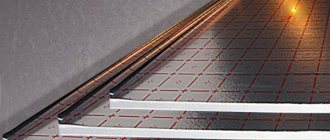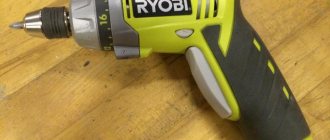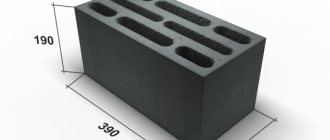Many owners of country and private farms not connected to a centralized water supply are familiar firsthand with the problem of supplying water to their home and garden plot.
The “Malysh” submersible pump will help partially solve this problem; although it is not a powerful device capable of pumping water from artesian wells, it can cope with supplying water from wells, shallow wells and open reservoirs.
It will be useful for those who are just planning to set up an autonomous water supply, as well as users of pumping equipment, to learn about the structure, operating principle and operating rules of the unit. We will describe in detail how to install the “Baby” in a well and ensure its uninterrupted operation.
Pump “Baby”: where is it used?
Most often, an inexpensive vibration pump can be found in garden plots and vegetable gardens. Sometimes it is used on farms and farmsteads. The equipment is a universal device and can be used in the following areas:
- Watering and irrigation . “Malyshok” is used both in small areas and in fields. With its help, water is collected to create artificial ponds and swimming pools, and vice versa, it is pumped out for drainage.
- Cleaning up flooded buildings . Some models with filters that are resistant to contaminated water can be used to remove liquid from flooded areas.
- Injection from a drilling source . The characteristics of the “Malysh” submersible pump allow you to quickly fill containers and the water supply system in a country house or in a small private house.
It is important to understand that different models of equipment are used for clean and contaminated water. So, for purified substances, an option with lower absorption is suitable, and for water with waste fractions, it is better to buy an option with an upper intake.
Using a pump in the country Source userapi.com
Manufacturers
The names “Baby” and “Stream” have long become household names. This is what small submersible vibration pumps are called today. Initially, they were produced exclusively in Russia or in neighboring countries, but today there are plenty of Chinese “Kids” on the market. In general, there are several manufacturers of such pumps in Russia:
- In the city of Livny in the Oryol region and in Bavleny, Vladimirskaya, it is Babies that are produced. Most come with an upper water intake, Little M - with a lower one.
- Babies are also produced in Klimovsk, Moscow region.
- In Kursk and Kirov (Lepse plant) they produce pumps of the same type, but under different names - Aquarius.
- In Bryansk (Topol enterprise) Rodnichki are produced. Submersible pumps with the same name are produced in Chelyabinsk, as well as by the company Zubr.
- Rucheek units are produced in Mogilev (Belarus).
Different names and companies, some differences in characteristics, but all these are submersible vibration pumps of the Malysh type
The rest of the brands are Chinese. How to determine? Carefully examine the packaging and passport. If it is a Russian manufacturer, there must be an address, the name of the enterprise, a list of service providers, etc. If there is no such information, this product comes from the DPRK.
Water intake: use and operating principle of different products
There are many pump models, and the differences are often due to manufacturers. However, the traditional classification divides equipment into 2 types:
- Upper water intake . The most common option, due to its better protection against clogging. The design is such that the engine is located under the valve, into which water is pumped and supplied further. This prevents excessive heating, and if the water drops below the permissible level, the mechanism automatically turns off. The engine itself remains in the water. Since the suction occurs from above, much less debris from the bottom penetrates inside. The only drawback of the equipment is dry operation in the absence of an idle relay. This is necessary to prevent air from being sucked in.
- Lower water intake . This “Baby” is more often used in deep wells, where it can be installed far from the bottom. It is dangerous to use the device without a thermal protection relay. This is due to the fact that the engine is located above the pipe. The absence of a relay leads to rapid overheating and breakdowns. The equipment also needs sand and debris filters.
The technical characteristics of the “Malysh” water pump differ from different manufacturers. There are 4 classic types of vibration devices.
“Baby” device with upper water intake Source cloudinary.com
Classic model
In this version, vibration equipment is used for small sources with a diameter of more than 10 cm. The pump can be used to supply through a hose at a distance of up to 150-200 m, however, solutions with a limit of up to 100 m are more common. Equipment with cool liquid is used. A lower pipe is used for water intake.
| Properties and parameters of the classical model | |
| What power does it work with? | The model is characterized by an average of 220-245 W |
| Can lift water to heights | up to 40 m |
| Nutrition | 220 V |
| Performance | At 1 m height – 1050 l, at 40 m – 430 l. Parameters are given for hours of operation. |
| Pump lowering depth | no more than 5 m |
| How long can it function? | 2 hours without a break |
| Weight | 3.5 kg |
| What pressure does it give? | 0.4 mPa |
For the “Malysh” pump you need a hose with a diameter of 18-22 mm . When purchasing this model, you need to take into account that the cord is often completely missing from the kit. It is selected according to length based on needs. Options with protective relays and other parts included began to appear. However, the cheapest offers do not include them.
Pump model “Baby classic” Source onlinetrade.ru
Model "Malysh-M"
Almost complete analogue of the previous model. However, the pump is made with a pipe for upper water intake.
Option "Baby-K"
Another version of the basic model, which matches the parameters 100%. However, the package includes an overheat protection relay.
See also: Catalog of companies that specialize in the design and installation of sewerage and water supply
Series "Baby-3"
An improved model of a submersible pump with improved equipment. It is used in wells and boreholes with shallow immersion depth and a diameter of 8 cm. Distinctive features include:
- completely monolithic block, completely insulated along with the electrical wire;
- not so much power required for use in low-yield wells - 165 W;
- Can be submerged to depths of up to 20 m while maintaining a capacity of 0.43 cubic meters. m/hour;
- weight not exceeding 3 kg.
The diameter of the hoses used is 25 mm, or 3/4 inches. Even the factory equipment contains an integrated electrical cable 30 m long.
Pump “Malysh-3” with a long cable Source blogspot.com
Specifications
As has already been said, Malysh submersible pumps have low power - mostly about 250 W, that is, it is not able to create high pressure. Their clones with other names can be found slightly more powerful.
What is also important is the lifting height - this is how far water can be pumped. In the technical specifications, it should be about 20% greater than what you need.
Pay attention to the power supply for which this model is designed. Usually this is 200 V with possible small deviations of the order of 5%, but the reality is that the network can be 240 V, and at such a voltage a pump with such characteristics will burn out. The solution is to install a stabilizer or look for a model with a higher operating voltage (a decrease from the operating voltage does not have such a negative effect on the work - the power decreases).
The length of the electric cable can be from 10 meters to 40
Another important indicator is productivity. It is usually indicated in liters per minute or per second. This value shows how much water the unit is able to pump under normal conditions. For this type of equipment, this figure is quite small - about 400 ml/sec. Such a submersible pump Malysh can provide water to one water collection point - one irrigation hose or tap in the house. He is not capable of anything more without additional equipment.
| Name | Water intake | Idle/overheat protection | Power | Performance | Lifting height | Diameter | Immersion depth | Price |
| Malysh-M P 1500 Topol | Upper | no Yes | 240 W | 24 l/min | 60 m | 99 mm | 3m | RUB 1,741 (plastic) |
| Rucheyok-1 Mogilev | Upper | no no | 225 W | 18 l/min | 72 m | 110 mm | RUR 1,459 (cord 10 m) | |
| PATRIOT VP-10B (USA/China) | Upper | no no | 250 W | 18 l/min | 60 m | 98 m | 7 m | RUB 1,760 (cable length 10 m) |
| BELAMOS BV012 (Russia/China) | Lower | no no | 300 W | 16.6 l/min | 70 m | 100 mm | 3m | 2110 RUR (cord 10 m) |
| Malysh-M 1514 Topol | Upper | no Yes | 250 W | 25 l/min | 60 m | 98 mm | 3m | RUR 2,771 (metal, cord 40 m) |
| Caliber NVT-210/10 (Russia/China) | Upper | no no | 210 W | 12 l/min | 40 m | 78 m | 10 m | 1099 RUR (cord 10 m) |
| Bison MASTER Rodnichok NPV-240-10 | Upper | no no | 240 W | 24 l/min | 60 m | 100 m | 3m | 1869 RUR (cord 10 m) |
| QUATTRO ELEMENTI Acquatico 250 | Upper | no no | 250 W | 17.5 l/min | 75 m | 100 m | 2 m | RUR 2,715 (cord 10 m) |
| Aquarius-3 (Lepse) | Upper | no/is | 265 W | 26 l/min | 40 m | 98 mm | 1900 RUR (cord 10 m) | |
| Baby 25 m (Kursk) | Lower | Not really | 250 W | 7.1 l/min | 40 m | 1920 RUR (cord 25 m) |
Each type of pump is available with a different length of electrical cord and this changes the price (the longer the cord, the more expensive). You can also find varieties with dry run protection, but you can make your own (see below).
The operating principle of the “Baby”
The not too complicated and reliable design, as well as the good characteristics of the Malysh pump, make it an excellent option for simple and economical use. It consists of a sealed housing, protected from liquid penetration, and an electric drive located in it. The drive contains a core, an electrical wire, a vibrator and two coils.
Options with top water injection are equipped with a valve to close the inlet in the absence of water pressure in the top part of the body. In a model with a lower intake, such a valve is located at the bottom.
Functions: operating principle of a pressure switch
Pumping stations are usually not equipped with automation to monitor and control work. At the same time, turning on and off the pumping equipment in autonomous mode is extremely necessary, because performing these operations manually will require constant attention to the system and will not allow the inhabitants of the house to go about their business, work and rest.
A sufficient level of control is provided by the pressure switch. It is a block with a plastic casing. Inside the housing there are two springs, each of which is “responsible” for setting the value of the extreme position (parameters for turning the pump on and off).
Diagram of a water pressure switch for a pump
The relay is functionally connected to a hydraulic accumulator, which contains water and compressed air; the media come into contact through a flexible elastic membrane. In the working position, the water in the tank presses on the air through the dividing partition, creating a certain pressure. As water is consumed, its volume decreases and the pressure decreases. When a certain value (set on the relay) is reached, the pump turns on and water is pumped into the tank until the value set on the second spring is reached.
The connection diagram for a water pressure switch for a pump provides for connecting the equipment to a water supply system, a pump and an electrical power supply network.
Video description
The video below clearly shows the operating features of the pump:
The operating principle of the “Malysh” pump is very simple and is based on the use of alternating current. Its force activates the anchor and the piston, which create movement and force water into the pipe.
You can find a large number of “Baby” type pumps on sale, but they may have a different name. They are made by Chinese, Russian, some European and American brands. Their parameters are approximately the same, and the power is in the range of 220-250 W. The throughput, or performance, of these models can differ by almost 2 times. For example, for the “Malysh MP 1500” it is equal to 24 liters, while for its analogue “Caliber NVT” the figure will be only 12 liters. The diameter of the pumps themselves usually also does not exceed 110 mm.
The cost depends not only on the characteristics of the “Malysh” vibration pump, but also on the length of the cord. The larger it is, the more expensive it is.
Recommendations for use
A change in the supply voltage has a negative impact on the operation of the vibration pump. The problem can be solved by installing a voltage stabilizer , but its price is several times higher than the cost of the pump itself. In order to do without expensive equipment, we can recommend the following:
- When the voltage drops to two hundred volts, the power of the Malysh pump drops sharply, and consequently, the flow also decreases. If the voltage in your network is low, then in order to compensate for these fluctuations, you should choose a pump with a rated flow 25-30% greater than the calculated value. This way the device will remain operational at low voltage.
- If the supply voltage is higher than 240 V, the heating of the electric pump becomes critical and the electromagnet winding burns out. This happens due to a sharp increase in current in the electromagnet coils. A current relay will help protect the device - this is a device that switches its contacts at a certain amount of electric current. It must be connected in series with the electromagnet winding. It works in the same way as a circuit breaker in a power supply panel, but has a smoother setting of the operating current. When adjusting the relay, the operating current is set to 0.5 A more than the rated current of the electric pump.
To use these units in a pumping station, it is important to know what pressure the Malysh pump creates. The operating pressure value is 0.4 MPa. This is enough to supply a small home with only one water distribution point at a time.
Features of hose selection
One of the main difficulties when purchasing equipment for many users is choosing the diameter of the hose for the “Malysh” pump. How long the device will last depends on this parameter. When choosing, take into account the following features:
- a nozzle is put on the part of the hose immersed in water to filter dirt and large particles;
- Before starting, the hose must be filled with water;
- if the pump will be used all year round, then you need to select an accessory with high resistance to frost;
- rubber products are not suitable for use with the “Kid”;
- When working with a well, HDPE pipe is used.
The diameter of the hose determines how much water it can pass through. The most common and versatile option is 25 mm or ¾ inch. A smaller diameter can be used if you need to connect communications directly to the water supply system. But the instructions may have certain restrictions.
Reinforced watering hose for “Baby” Source uvelirstudio.ru
Setting up the pressure switch
To configure the pressure switch, it is necessary to set the operating pressure in the system. To do this, after assembling the circuit, the equipment should be turned on and wait for automatic shutdown when the relay is activated. After this, the roof is removed and the settings are performed in the following sequence:
- Loosen the nut that presses the smaller spring.
- Set the required minimum pressure value (pump activation parameter). Rotating the large spring nut clockwise increases the set pressure value, and in the opposite direction decreases it.
- Having opened the tap, they empty the system, monitoring the automatic response threshold using a pressure gauge. If the result is unsatisfactory, adjust the setting.
- The pump shutdown parameter can be adjusted in the same way by rotating the nut on the second (smaller) spring.
Well: installation rules
Before starting work, the pump must be installed correctly. To do this, use a synthetic cable, tying it to special eyes on the body. The node should be 10 cm from the body or higher. The edges are then seared to secure it.
Important! It is possible to use a metal cable secured at least 2 m from the body on a synthetic rope. Otherwise, the metal will quickly collapse from vibration.
Next, proceed to connecting pipes and hoses:
- A suitable hose is attached to the pipe through which the pump pumps water. It is important that the diameter of the “Malysh” pump hose is larger than the part on which it is installed. However, an accessory that is too narrow will increase the load on the device. The optimal size is 2-3 mm larger.
- If a pipe is used, it is also connected to the pipe with a hose, the length of which must be at least 2 m.
- A metal clamp is used for fastening. To prevent it from jumping off, you can sharpen the pipe with a file to increase adhesion. Or make a groove for a wire clamp. The material for fastening is stainless steel with notches.
Steel clamp for fastening the hose Source boltmix.ru
- After the initial manipulations, the hose, cable and cable are connected and secured with constrictions. The first should be 25-30 cm from the body. For the rest, a step of 1-2 m is assumed. For constrictions, adhesive tape is used, since metal can damage the cord and twine.
- A strong crossbar is installed on top, on which the cable is fixed. You can also make a hook on the side wall for this purpose.
- Immerse the equipment to the required depth in accordance with the instructions.
During installation, it is important to remember that the “Baby” should not come into contact with the walls of the well or well.
Advice! When installing in a well with a low water level with a cable length of up to 5 m, the product must be suspended on a spring gasket to the crossbar.
This approach will reduce vibration. You can use a piece of rubber to distribute the weight.
Review of popular models
There are two types of pressure switches: mechanical and electronic, the latter are much more expensive and are rarely used. The market offers a wide range of devices from domestic and foreign manufacturers, making it easier to select the required model.
RDM-5 Gilex (15 USD) is the most popular high-quality model from a domestic manufacturer.
RDM-5
Characteristics
- range: 1.0 - 4.6 atm.;
- minimum difference: 1 atm.;
- operating current: maximum 10 A;
- protection class: IP 44;
- factory settings: 1.4 atm. and 2.8 atm.
Genebre 3781 1/4″ (10 cu) is a budget model made in Spain.
Genebre 3781 1/4″
Characteristics
- body material: plastic;
- pressure: upper 10 atm;
- connection: threaded 1.4 inches;
- weight: 0.4 kg.
Italtecnica PM/5-3W (13 cu) is an inexpensive device from an Italian manufacturer with a built-in pressure gauge.
Italtecnica PM/5-3W
Characteristics
- maximum current: 12A;
- working pressure: maximum 5 atm;
- lower: adjustment range 1 - 2.5 atm.;
- upper: range 1.8 - 4.5 atm.
The pressure switch is the most important element in the water intake system, providing automatic individual water supply to the house. It is located next to the hydraulic accumulator, the operating mode is set using adjusting screws inside the housing.
Video description
What to do if the pump gets stuck in the well after installation is shown in this video:
Horizontal installation in a river or lake
Since the technical characteristics of the Malysh pump allow it to be immersed even in natural open sources of water, it is important to install the equipment correctly. The process is different from installation in a well.
Prepare the pump in the same way as for a well: put on a hose and tighten it. And the body is protected with a rubber sheet 2-3 mm thick. Immerse the structure in water and turn it on.
Rewind the reel
If you need to rewind the vibration pump coil, prepare the following consumables and tools:
- wire brand PETV;
- set for replacing epoxy compound (epoxy resin, plasticizer, hardener);
- electric stove;
- winding machine (can also be done manually);
- soldering iron;
- hammer.
While rewinding the coil, you will need to melt the epoxy compound. It is toxic, so carry out the work outside or in the garage. Place the filled electromagnet on the tile and wait until the epoxy heats up to 165 degrees. This will be visible from the toxic haze that appears.
Carefully knock the electromagnet out of the housing on a wooden object, while the electromagnet looks straight down. When the magnet changes its position, remove it. We clean the heated body from epoxy resin, using a screwdriver or a metal brush.
We knock the electromagnet out of the coil with a wooden wedge.
We do not clamp the coils in a vice, we only hold them with our hands.
Once the magnet is removed, unwind the coil, removing all the epoxy.
Using a winding machine, wrap the spool completely. Here you can do without a machine, but it will take longer to wrap it by hand.
Solder the ends of the wire to the main part, now we mount the electromagnetic core into the coil body. We solder the power cable to the beginning of the new winding. It is permissible to “seat” the coils by lightly tapping the core.
After mixing the epoxy with the plasticizer and adding the hardener, we pour it into the vertically fixed body of the device. Fill the compound to the top of the electromagnet, wait 10 minutes and add the compound again (after filling all the cracks, it will settle). After 24 hours, we assemble the pump and check its functionality.
Frequent breakdowns and options for eliminating them
Some users experience that the device does not pump water. The most common causes and ways to solve them include:
- loosening the locknut in the pump - you can tighten it and get rid of the problem;
- breakdown of the pumping cuff - the product is disassembled, a part is found that looks like 2 saucers, and it is replaced with a new one;
- output of the pumping rod - it is located next to the motor and requires professional repair.
Sometimes the pressure switch fails. It can also only be repaired at a service center.
Internal structure of the “Baby” Source oboiman.ru
Competent DIY repairs
Failures can occur in electrical and mechanical parts. The equipment may fail partially or completely. Partial malfunction of the device may mean either a breakdown of internal parts or a violation of adjustment.
Most often, due to the operation of the device without water, it overheats and the automation fails. For the same reason, the insulation may overheat, the filling will delaminate, and the yoke may fall out of the body. In this case, the pump hums, does not pump liquid, and the body of the product may be damaged. It is possible to avoid such malfunctions by following the operating rules of the pump.
Mechanical failures of the vibration pump occur quite often.
Let's look at the most common causes of breakdowns:
- Limescale deposits on parts;
- Depressurization of the housing due to mechanical damage;
- Clogging of the insides with dirt;
- Loosening of bolt connections.
If you suspect a malfunction of the device, you must disconnect it from the power supply and remove it from the water. Before disassembling the pump, you should inspect it. Disconnect the supply hose and inspect the device from above for damage. Violation of the integrity of the housing can only be eliminated by completely replacing it. If everything is fine with it, you need to check the resistance of the coils with a tester. If the contacts close, the coil must be replaced.
This usually requires a specialist, because... It is very difficult to do this at home.
Pump repairs should be carried out when it is turned off.
The next step, if the coil is in good condition, is to bleed the pump. If air enters freely or the valve closes when taking a sharp breath into the inlet, then everything is fine with the pump. The device also needs to be shaken; the presence of extraneous sounds indicates a breakdown inside.
How to extend the life of the pump
In order not to fall over time, and to ensure that it works properly throughout its entire service life, it is important to follow some recommendations:
- replacing ferrous metal bolts with stainless steel ones;
- regular check of fasteners on the body and in the piston area;
- you can close the bolts with a layer of superglue;
- regular inspection - once a year the pump is disassembled, cleaned, cracked elements are replaced;
- When the level in the source constantly changes, models with upper water intake are purchased.
Before use, it is important to study the data sheet for the pump. Although many models have the same characteristics, their use may vary greatly.
What to do if the device does not work well
If the pump is not functioning well, its power has decreased and there is no pressure, you should try to rinse it with clean water; perhaps the reason is that it is clogged with debris. Disassembly of the “Baby” is required if the causes of the breakdown were not established during an external inspection.
The repair includes the following steps:
- It is necessary to unscrew the bolts on the body connecting the two parts of the device. If they are rusty and cannot be twisted by hand, you can cut them off with a grinder.
- The piston and other internal parts should be cleaned of dirt. The pump coil is treated with a compound; it must be removed from the housing.
- The reel needs to be inspected, repaired and rewinded. If the rewind is burned out, you should replace it with a new one.
- An ohmmeter is used to check the functionality of the power cord. If it malfunctions, it can be shortened or a new one installed.
- Assembly of the device. Be sure to properly align the holes through which the water flows.
Check the functionality of the pump. If there is additional noise, the bolts need to be tightened better.
Briefly about the main thing
The budget pump “Malysh”, the technical characteristics of which make the equipment universal, is used to remove water from flooded areas and to treat plantings on the site. The most reliable option is a top-type pump.
The key parameters of the standard models “Malysh” and “Malysh-M” include:
- average power 220 W;
- immersion depth – from 3 to 7 m;
- productivity – 12-20 l per minute;
- water supply for a length - from 100 m;
- Some models are equipped with overheating protection.
There is also a newer model that has reduced power and can be immersed to a shallower depth for efficient operation. This is “Kid-3”.
When connecting the pump, polymer hoses or pipes are used. It is very important to install it strictly following the instructions, securely fixing the hoses with a clamp and preventing the body from rubbing against other elements.
Ratings 0
Some aspects of country water supply
It's no secret that in the vast majority of cases, there is no centralized water supply in dacha plots; each homeowner has to resolve the issue of dacha water supply independently. If electricity is supplied and there is a well or borehole, it is already possible to create an uninterrupted water supply system with certain skills and knowledge. Choosing the right pumping station is the most important task, since in the future this will be the key to uninterrupted water supply. There are many options for supplying water from a well or borehole to a house or for watering a garden plot.
A pumping station for a summer residence is an excellent option, which involves automating this water supply process, which is quite convenient and frees up a lot of time for other equally important matters. Let's consider several options for pumping stations, built based on the use of different types of pumps and a combination of pumping automation.
